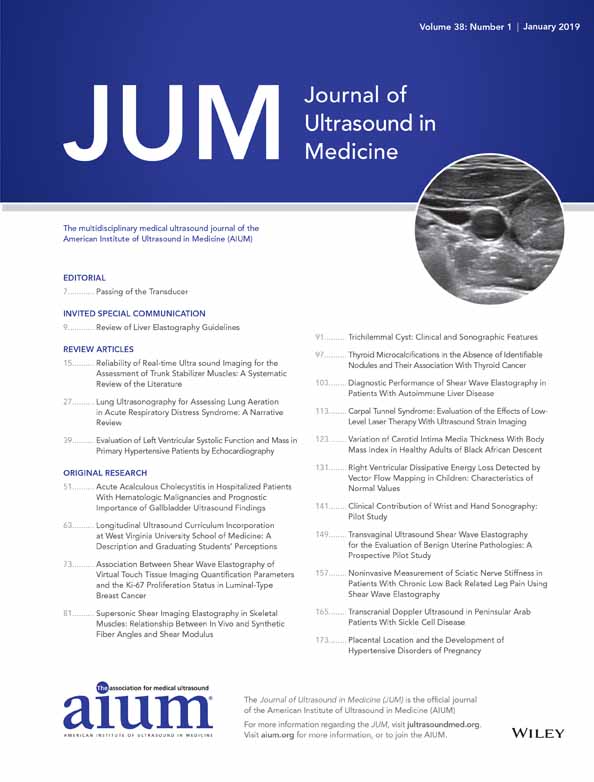Transcranial Doppler Ultrasound in Peninsular Arab Patients With Sickle Cell Disease
We thank all of the patients who participated in the study and the health care teams in the different hospitals. In particular, we thank the following physicians who looked after the patients: Sundus Alsharida (Kuwait), Wasif Shah, Mohamed Mandooh, and Marwa Ramadan (Royal Hospital), and Wissam Jabbar (Basra Maternity and Children's Hospital). Novartis Oncology provided the transcranial Doppler equipment used on the Omani patients. Diana Ann Thomas helped with the statistical analysis. Their assistance is most appreciated. This study was supported by Kuwait University grant MK 01/08.
Abstract
Objectives
Transcranial Doppler ultrasound is used to identify patients with sickle cell disease (SCD) at risk for stroke. We performed transcranial Doppler studies in patients from 4 countries in the Arabian Peninsula (Kuwait, Oman, Iraq, and United Arab Emirates) to document the prevalence of abnormal transcranial Doppler findings.
Methods
The patients were recruited from outpatient clinics and studied in a steady state. Transcranial Doppler examinations were performed with standard equipment by experienced operators. The time-averaged maximum mean velocity (TAMMV) was documented in the arteries of the circle of Willis. The hemoglobin (Hb) genotype was confirmed, and the fetal Hb level and complete blood counts were determined.
Results
There were 415 patients in the study, aged 2 to 18 years (mean ± SD, 8.6 ± 3.5 years). None of the patients had an abnormal TAMMV (ie, > 200 cm/s), whereas only 13 (3.1%), all from Iraq, had conditional values (170–200 cm/s) in the right middle cerebral artery and 7 (1.7%) in the left middle cerebral artery. There were no consistent TAMMV differences among male and female patients or in patients with different Hb genotypes (sickle cell anemia, sickle cell β0-thalassemia, and sickle D). The use of hydroxyurea was associated with a lower TAMMV, whereas a blood transfusion history had no influence. Total hemoglobin, reticulocyte count, serum bilirubin, and fetal Hb values showed varying degrees of association with the TAMMV in the different vessels.
Conclusions
This study has demonstrated the rarity of abnormal transcranial Doppler findings among Peninsular Arab patients with SCD. The guidelines for transcranial Doppler screening in this population need further studies and recommendations.




